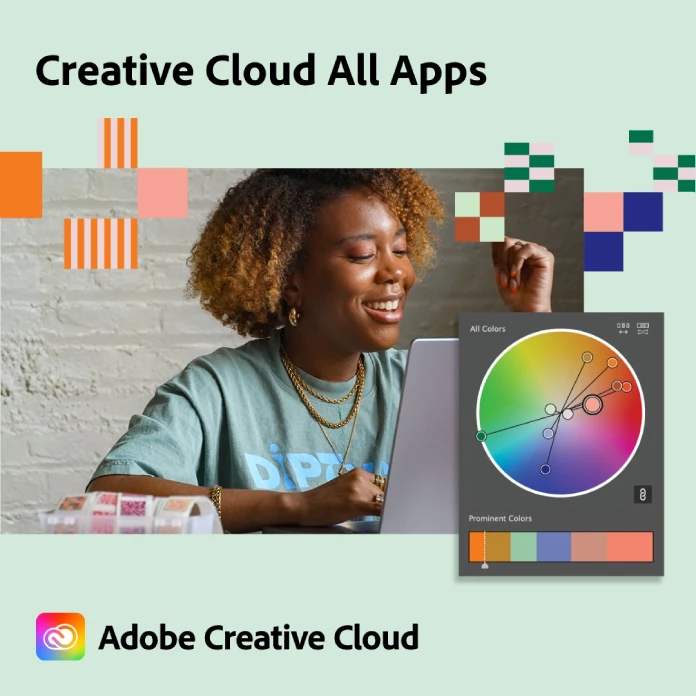This post contains affiliate links. We may earn a commission if you click on them and make a purchase. It’s at no extra cost to you and helps us run this site. Thanks for your support!
Is AI Making You a Bad Designer? The Truth About Tools & Creativity.
So, you’re wondering if using AI images and graphic templates makes you a bad designer. That’s a valid question, seriously. It’s something a lot of us are wrestling with. Let’s break it down, shall we?
First off, think about tools. We use tools all the time, right? From Photoshop to drawing tablets. Are those making us bad designers? Of course not! They’re just tools. AI is just another tool. The key isn’t if you use it, but how you use it.
Let’s consider those AI-generated images. Are you just typing in a prompt, grabbing the first thing that pops up on Midjourney or Adobe Firefly, and calling it a day? If so, maybe that’s not the best. Ask yourself, does it truly represent your creative vision? Does it solve the communication problem you are tackling? Are you adding to it, tweaking it, making it your own? Or are you just a passive user?
Think of it like a collaboration with a machine. Can you guide the AI, iterate, and experiment? Can you use its output as a starting point? As inspiration? As one element within a larger project? That’s when the magic happens. That’s where your design skills shine.
And graphic templates known from platforms such as Adobe Stock, Creative Market, Envato Elements, or Shutterstock? They are similar. These are the scaffolding that can help you build. They can give you a head start. But ask yourself, is it too much of a shortcut? Does it look like everyone else’s work? Are you just swapping out colors and text? If so, that might be a red flag.
A template is a foundation, not the whole house. You need to personalize it. You need to add unique elements. This requires you to infuse your own knowledge and skills. It’s about understanding design principles. It is about composition, typography, and color theory. These are what set you apart.

So, what makes a “bad” designer? It’s not using AI or templates. It’s relying on them too heavily, without adding your own creativity and craft. It’s letting the machine drive when it is you that should be in the driver’s seat.
Here are some signs that might indicate you’re relying too much on these tools:
- You’re not thinking critically: Are you really considering why you’re making design choices? Are you just going with what the AI spits out?
- You’re not learning new skills: Are you ignoring the fundamentals and just letting the tech do the work?
- Your work lacks originality: Does everything you create feel generic and predictable? Are you just repeating what other people are already doing?
- You’re missing the “why”: Are you forgetting the purpose of your design? It should solve a problem or communicate a message.
- You’re not growing: Are you stuck in the same repetitive process, not challenging yourself to experiment?
Let’s flip the script, though. How can you use these tools well?
- Speed up your process: AI and templates can help you create faster, especially when it comes to repetitive tasks.
- Brainstorm ideas: Use AI to generate different styles and concepts you might not have thought of.
- Overcome creative blocks: When you feel stuck, templates can be a great springboard for fresh thinking.
- Experiment with new styles: Explore looks you wouldn’t normally create on your own.
- Refine your skills: By using AI, you can see how certain visual elements work together in new ways.
- Focus on strategy: Offload the menial parts to machines so you can focus on the big picture.
- Be a “human-in-the-loop”: Act as a curator, guiding the AI, making important choices, and refining its output.
The bottom line is this: AI and templates are powerful. Used well, they can enhance your design abilities. They can make you faster and more efficient. Used poorly, they can hinder your growth. They can lead to generic work. It’s about finding the right balance.
So, are you a bad designer if you use AI and templates? Not necessarily. Are you using them in a way that improves or degrades your process? This is the key question. The real answer lies in your intentionality, your creativity, and your skill. Embrace the tools, but don’t let them do all the thinking for you. Your unique perspective is what truly matters. Your design journey is about more than just using technology. It’s about adding your touch, your vision, and your heart to every creation. And that’s something a machine will never be able to replicate.
What do you think? Where do you see yourself in this spectrum? I’d love to hear your thoughts.
Header image by Alphaspirit (via Adobe Stock).
Subscribe to our newsletter!








